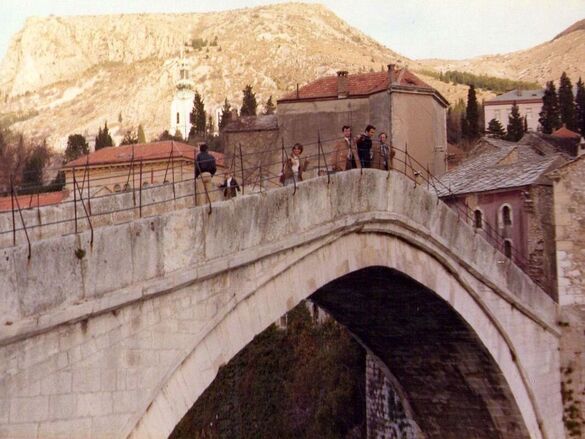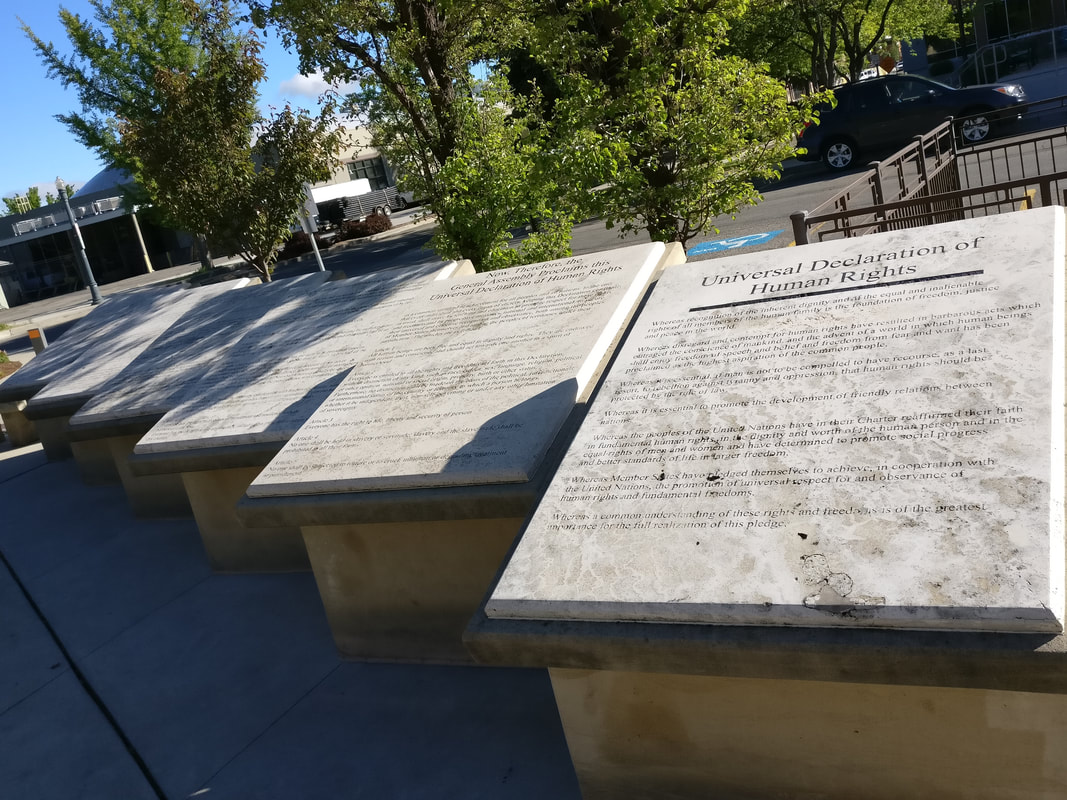The Importance of Cultural Heritage
The Blue Shield’s work is founded on the belief that cultural heritage – tangible and intangible - is important. It is a vital expression of the culture that makes up unique communities and its loss during conflict and disaster can be catastrophic.
|
“Why do we feel more pain looking at the image of the destroyed bridge than the image of massacred people? Perhaps because we see our own mortality in the collapse of the bridge. We expect people to die; we count on our lives to end. The destruction of a monument to civilisation is something else. The bridge in all its beauty and grace was built to outline us; it was an attempt to grasp eternity … A dead woman is one of us – but the bridge is all of us forever.”
Croatian writer Slavenka Drauliç (in Bevan (2006): The Destruction of Memory. Reaktion Books; 26) Stari Most Bridge, Mostar, before destruction © Zoran Kurelić Rabko, CC BY-SA 3.0, via Wikimedia Commons
|
Cultural heritage is the heritage we have inherited: our legacy, our memories, physical places, objects and intangible beliefs and practices, and so much more. Intangible heritage can often be associated with particular tangible cultural heritage. For example, placing poppies on a war memorial is a practice commemorating an event, but it takes place at a physical location. In Australia, many aboriginal groups have detailed practices passed down for many generations which are integral components of places in the landscape. Our heritage – physical and non-physical – is an important part of who we are and what we identify with, for individuals and communities.
Sycamore Gap, on Hadrian's Wall World Heritage Site, 8 October 2020. When the tree was deliberately cut down in 2023 in an act of vandalism, there was a national outcry. © Clementp.fr, CC By-SA 4.0, via Wikimedia Commons.
This cultural identity relies on the memory of communities and individuals: it is key to identity, well-being, decisions and actions. Although memories are not always positive, and can be contested, they are an integral part of individuals, communities and societies. Cultural property is a powerful tool in determining what is remembered – and what is forgotten or obscured. For example, after conflicts and disasters, buildings can provide visible symbols of who is given priority in rebuilding if the community is divided – or who is not given permission at all.
Blue Shield strives to prevent the loss of heritage to communities, recognising that it is a fundamental part of their wellbeing. There are seven key reasons for this.
Blue Shield strives to prevent the loss of heritage to communities, recognising that it is a fundamental part of their wellbeing. There are seven key reasons for this.
Cultural/society
|
Political uses
|
Defaced Colston statue at the M Shed museum, Bristol.
Colston was a senior executive of the Royal African Company who organised the Atlantic slave trade. Proceeds from that trade contributed to his philanthropic works, and a statue was erected to commemorate that, which was designated a Grade II listed structure in 1977. On 7 June 2020, the statue was toppled, defaced, and pushed into Bristol Harbour during the George Floyd protests related to the Black Lives Matter movement, before eventually being moved to the M Shed Museum. © Adrian Boliston, CC BY 2.0, via Wikimedia Commons
Colston was a senior executive of the Royal African Company who organised the Atlantic slave trade. Proceeds from that trade contributed to his philanthropic works, and a statue was erected to commemorate that, which was designated a Grade II listed structure in 1977. On 7 June 2020, the statue was toppled, defaced, and pushed into Bristol Harbour during the George Floyd protests related to the Black Lives Matter movement, before eventually being moved to the M Shed Museum. © Adrian Boliston, CC BY 2.0, via Wikimedia Commons
international humanitarian rights
|
international humanitarian law
|
The Universal Declaration of Human Rights in monumental form at the Anne Frank Human Rights Memorial in Boise, Idaho is one of the few places on the planet where the complete text is on permanent public display. © Kencf0618, 14 May 2017, CC BY-SA 4.0, via Wikimedia Commons
medical/wellbeing
|
|
References for Political Uses:
- Read about the bombing of Nelson Pillar on the Old Dublin Town website.
- Read about the Year of the Memory in the Independent Newspaper, or if you have any academic library access, read work by Dr Dacia Viejo-Rose.
References for International Humanitarian Law:
- Read more about Customary Law, the Geneva Conventions, and Military Necessity in the Law Library of the BSI website.
References for International Human Rights Law:
- Read more about the Cultural Heritage and International Human Rights Law (IHRL) in the Law Library of the BSI website.
- Read more about the work of the United Nation's Special Rapporteur in the Field of Cultural Rights on the UN Office of the High Commissioner for Human Rights website.
References for Medical/Wellbeing:
- See examples on the Museums and Wellbeing Alliance blog, or read this research by Professor Chaterjee.
References for Sustainable Economic Development:
- Read more about how cultural heritage relates to sustainable development in the International Initiatives Section of the BSI website.
- Read about the bombing of Nelson Pillar on the Old Dublin Town website.
- Read about the Year of the Memory in the Independent Newspaper, or if you have any academic library access, read work by Dr Dacia Viejo-Rose.
References for International Humanitarian Law:
- Read more about Customary Law, the Geneva Conventions, and Military Necessity in the Law Library of the BSI website.
References for International Human Rights Law:
- Read more about the Cultural Heritage and International Human Rights Law (IHRL) in the Law Library of the BSI website.
- Read more about the work of the United Nation's Special Rapporteur in the Field of Cultural Rights on the UN Office of the High Commissioner for Human Rights website.
References for Medical/Wellbeing:
- See examples on the Museums and Wellbeing Alliance blog, or read this research by Professor Chaterjee.
References for Sustainable Economic Development:
- Read more about how cultural heritage relates to sustainable development in the International Initiatives Section of the BSI website.



